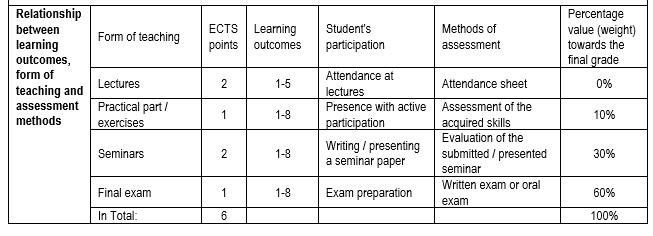Enable students to acquire knowledge and skills to recognise the health educational needs of individuals and groups and to implement programmes. Development of positive attitudes towards health and health care culture. Train students to carry out activities aimed at improving health. There are many studies that suggest that degenerative diseases associated with aging are not an inevitable result of time flow, but are precisely related to the destruction of nucleic acids, proteins and cell structure caused by free radicals.Free radicals are produced as a consequence of oxidation, they are also very reactive and unstable molecules that have a ‘corrosive’ effect on cells. By attaching free radicals to lipids, carbohydrates, proteins and genetic material new chain reactions and damage arise. Antioxidants are substances that protect cells from the oxidative effect of free radicals. In other words, our natural defence system (immunity) is strengthened. The more natural colours are present in the diet, the more natural antioxidant substances we have ingested.
Learning and behaviour: learning theories/types of learning, strategies and learning techniques, motivation, memory disorders, forgetting, concentration, exercises and strategies for the improvement of attention, teaching, behavioural modification, didactic basics of organised forms of health education, working with an individual and family, working with a small group, working with the community, group dynamics, various forms of group work.
Human relations and processes of assistance: self-consciousness, self-image, self-respect, self-esteem, self-motivation, self-protection, support. Consultation: objectives and results of the consultation, preconditions for successful consultation, general principles of the consultation. Health behaviour: needs, attitudes, values, beliefs, cultures and customs. The practical part of the course (exercises) follows the topics of theoretical courses.
Obavezna literatura:
- Barath A. Kultura, odgoj i zdravlje. Zagreb: Viša medicinska škola – Katedra za zdravstvenu psihologiju; 1995.
- Allison AC. The possible role of vitamin K deficiency in the pathogenesis of Alzheimer's disease and in augmenting brain damage associated with cardiovascular disease. Med Hypotheses. 2001;57(2):151-5.
- Grosvenor MB, Smolin LA. Nutrition Science & Applications. New York: John Wiley & Sons Inc.; 2010.
- Haller LR, Capra LC, urednice. Horticultural Therapy Methods: Connecting People and Plants in Health Care, Human Services, and Therapeutic Programs. 2. izd. Florida: CRC Press; 2012 | 2017.
- Levine L, Bauer J, Edney S, Richards J, Yorio N, Li K, Paré PW, Wheeler R. Scallion (Allium fistulosum) chemistry affected by variety and enviromental conditions (light and CO2). SAE Aerospace, 2005;01: 2770.
- Parađiković N. Vitamini, minerali i antioksidativne tvari u povrću. U Butković-Soldo S, urednik. Neurorehabilitacija i restauracijska neurologija. Osijek: Medicinski fakultet Osijek; 2013. str. 120-159.
Dopunska literatura:
- Zarevski P. Psihologija pamćenja i učenja. Jastrebarsko: Naklada Slap; 1994.
- Varoščić M. Izvori znanja u stjecanju zdravstvene kulture. Rijeka: Tiskara Rijeka; 1991.
- Ministarstvo poljoprivrede, šumarstva i vodnog gospodarstva Republike Hrvatske. Vodič za označavanje, reklamiranje i prezentiranje hrane. 8. izd. 2013.
- Ministarstvo poljoprivrede, šumarstva i vodnog gospodarstva Republike Hrvatske. Vodič o navođenju hranjivih vrijednosti hrane. 2. izd. 2013.
- Piramida pravilne prehrane, www.mypyramid.gov
Upon completion of this course, students will be able to:
- validate primary prevention and the importance of health preservation in the community
- implement health-promoting activities to target populations
- plan and implement public health projects in the community
- distinguish between the terms: health promotion, health protection and disease prevention; treatments, health education, social medicine
- explain the concept of health promotion of an individual and his/her environment through the role of a nurse
- understand factors that influence particular nutritional patterns with examples
- explain the healthy food basic principles for healthy adults
- define nutritional standards and guidelines and showcase their applications in different patient groups and application areas



